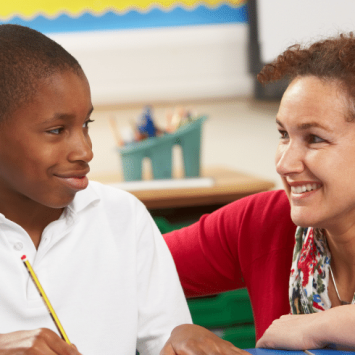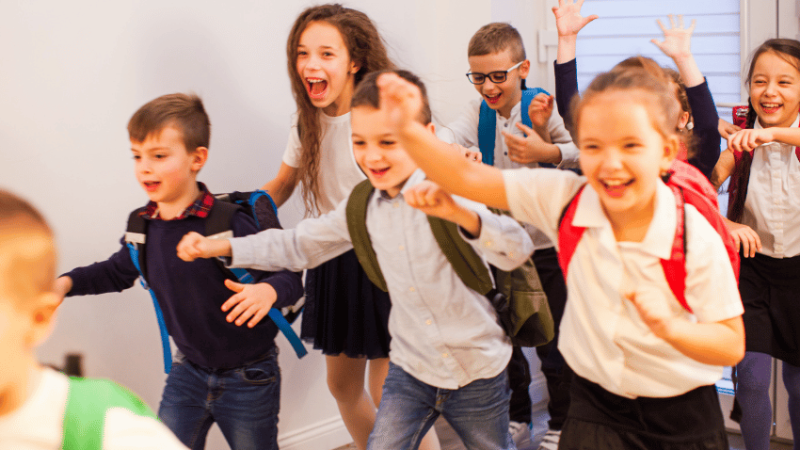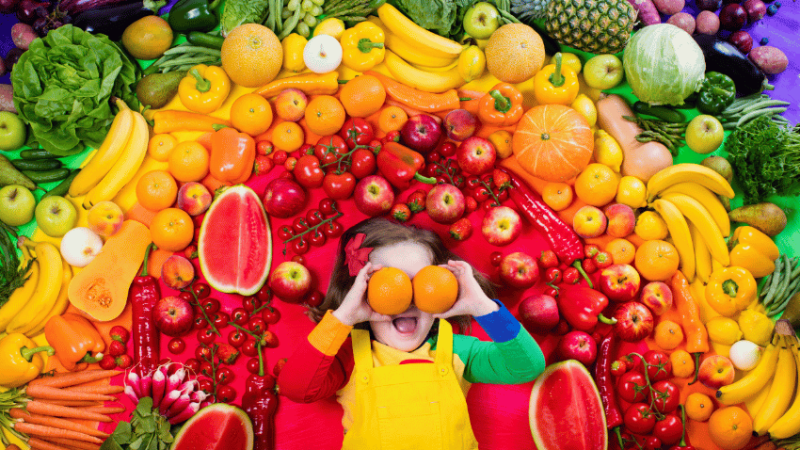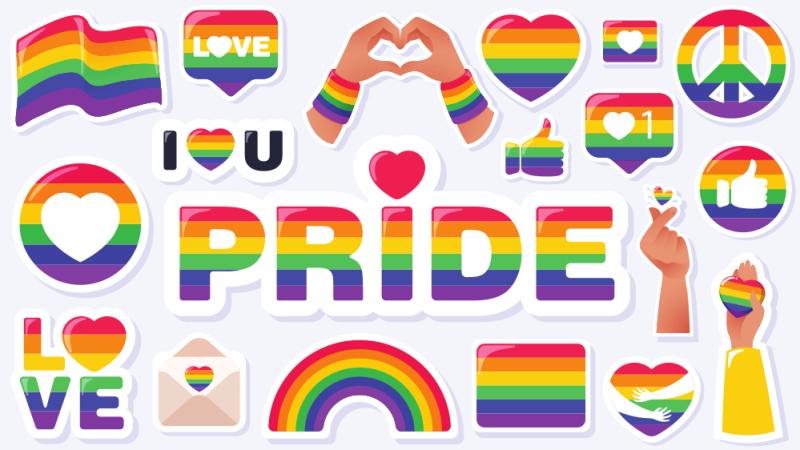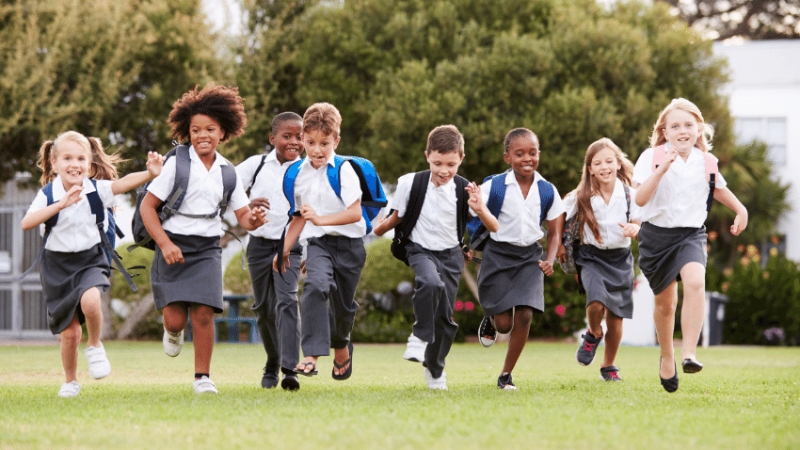Empathy Day 2023 – Best activities, books and curriculum ideas

Celebrate Empathy Day this June with these brilliant resources and ideas from fellow teachers…
- by Teachwire

Want to celebrate Empathy Day 2023 in your school but not sure where to start? We’ve got you covered!
What is Empathy Day?
Research tells us that 1 in 16 10-15-year-olds are not happy with their lives. Teachers are reporting rising levels of anxiety and mental health problems.
Empathy Day 2023 aims to celebrate empathy’s power to build a kinder, less divided world. It was founded in 2017 and aims to drive a new empathy movement and remind everyone that empathy is a skill that can be learnt.
Empathy Day is story-driven, inspired by scientific evidence that in identifying with book characters, we learn to see things from other points of view.
The day is organised by social enterprise, EmpathyLab.
When is Empathy Day 2023?
Empathy Day 2023 is on 8th June.
JUMP TO A SECTION
- Official Empathy Day resources
- Kindness lesson plan
- 5 diverse books plus activities
- More Empathy Day ideas
- Why books are key to building empathy
Official Empathy Day 2023 resources

National assembly
To launch the Empathy Day Live! free online festival, Children’s Laureate Joseph Coelho will lead a national assembly featuring an exclusive Empathy Day 2023 poem.
Stream it from 9am on 8th June 2023. Special guests including Cressida Cowell, Chris Riddell, Jacqueline Wilson and Frank Cottrell Boyce will also feature.
From 2pm, join beloved author and illustrator Rob Biddulph for a special empathy-themed ‘Draw with
Rob’.
Empathy Day 2023 handbook

A new empathy handbook for 7-12-year-olds goes on sale on 18th May 2023, in celebration of Empathy Day 2023. Written by Rashmi Sirdeshpande, We’ve Got This! takes readers through six simple steps to harness empathy as their human superpower.
Mission Empathy

At the heart of Empathy Day 2023 are five inspiring Mission Empathy Challenge activities for children to complete in class or at home from May onwards.
Designed to develop key empathy skills such as active listening and perspective-taking, the emphasis is on social change.
Sign up for free resources to take part.
#ReadForEmpathy collection

Expert judges have chosen these 65 books for 3-16-year-olds for their empathy-building insights. Use them in school to help young people learn more about empathy – and put it into action.
Kindness lesson plan

This free lesson plan for KS1 and KS2 is perfect for Empathy Day 2023. It investigates how children can connect to both their peers and their community in fulfilling and meaningful ways. It also touches on connecting with yourself to overcome life’s challenges.
The lesson explores how to use nature to improve connections, what a growth mindset is and how to use positive self-talk.
Pupils will also learn about the importance of kindness and how to put it into action.
5 diverse books plus activities

Once Upon a Dragon’s Fire by Beatrice Blue (Frances Lincoln)
What’s the story?
Rumours abound about a fearsome dragon and the village is terrified of him. But it takes two children with open hearts and minds to visit the dragon and recognise what he needs to combat his sorrow and loneliness. And the warmth the dragon feels when someone starts to care helps save the village from a terrible storm.
This is a gorgeous picture book about understanding others and the empathetic power of stories.
Try this…
- Discuss how rumours can cause terrible harm. Talk about how misunderstandings can spread.
- Characters Sylas and Freya instinctively know how to comfort the lonely dragon. He needs lots of stories. Make a big dragon and create a ‘dragon story shelf’ in the classroom. Everyone can choose books for the shelf that they would like to read to the dragon.
- Freya and Sylas are also very sensitive to the needs of the dragon. They want to share stories that don’t hurt his feelings, so they make up their own. Write your own stories for a dragon and create a story book.
- In the story, the children’s empathy is strengthened by meeting the dragon. They need to help the villagers to understand the dragon too. Imagine you are Freya or Sylas and create a magazine or podcast all about the dragon that you could share with the village.
Too Small Tola by Atinuke, illustrated by Onyinye Iwu (Walker Books)
What’s the story?
Tola is the smallest member of the family. Her siblings often doubt her abilitie. However, ever surprising, Tola demonstrates that being small need not hold anyone back.
This book is great for expanding children’s world views, with insights into Tola’s Nigerian life, in which people with different religious beliefs live together. It will also help children recognise some of the universal themes and challenges of childhood – a fantastic early reader.
Try this…
- Step into Tola’s shoes. What would it feel like to be Tola, always being told you’re too small? Discuss in pairs then write emotion words on the board.
- Tola and her siblings must fetch all the water they need for the day before they go to school. Water is precious. In groups, imagine you are a member of Tola’s family and plan how to use the water carefully for the day ahead to ensure it doesn’t run out. How do pupils feel about some people having water on tap and others having to queue for it every day?
- Explore the beautiful Nigerian fabrics that Mr Abdul uses to make clothes. Ask children to copy their favourite design onto a piece of paper or design their own.
- The residents of Tola’s apartment celebrate Easter and Ramadan. Research these festivals, share experiences and present findings to classmates.
Windrush Child by Benjamin Zephaniah (Scholastic)
What’s the story?
Leonard has an idyllic childhood in Jamaica. However, at the age of ten he boards a ship with his mother to journey to England. Once there, he’s reunited with his father who has already been working in England for several years.
Leonard and his parents are part of the Windrush generation. As well as getting used to the cold weather and cramped living conditions, Leonard has to deal with daily prejudice and racism. The story follows Leonard up until 2018, when he is denied citizenship by the country that is his home.
Try this…
- Imagine you are Leonard leaving home in order to live in another country. List three things that you would look forward to and three things you would worry about.
- Listen to the poem Windrush by Denniston Stewart. Discuss how the experiences of the narrator compare to the experiences of Leonard and his family.
- What would happen if Leonard joined your school? How would the class make him feel welcome? What would you want him to know about life at your school? What advice would you give him to help him settle in?
- Listen to the Benjamin Zephaniah episode of the Author in your Classroom podcast to hear him talking about this book and his writing process. If you could ask him about his life, what would you want to know?
Meg, Jo, Beth, and Amy by Bre Indigo and Rey Terciero (Little, Brown Young Readers US)
What’s the story?
This graphic novel reimagines the story of Louisa May Alcott’s Little Women and shifts its location to modern-day Brooklyn. With their father away at war, it’s up to the March sisters to occupy themselves while their mother works to make ends meet.
Letters and emails from each of the girls split up the chapters and provide insight into each character’s world.
With sensitive portrayals of illness, blended families, sexuality, class, and race, the text shines a light on a range of experiences, prompting readers to question what it might feel like to be in the characters’ position and reflect on their own lives.
Try this…
- Which March sister do you most relate to? Write a diary extract about one of your favourite scenes in the book from their perspective. What might they be thinking?
- One of the central themes of the text is family. People live in lots of different types of families. Can you illustrate your family or the people you live with in a similar style? How could you represent everyone’s personality, hobbies and interests? How does your family compare to that of the March family?
- The text touches on some complex themes, ending with the girls at a Women’s March. Explore one of the more complex issues depicted in the graphic novel. Use websites such as CBBC’s Newsround to provide a child-friendly view of current affairs.
Belonging Street by Mandy Coe (Otter-Barry Books)
What’s the story?
Belonging Street is a wide-ranging collection of poems, all based on a loose theme of belonging. Poet and illustrator Mandy Coe has written about the natural world and why we are responsible for protecting it, the importance of family life and the power of connection.
The poems create wonderful discussion opportunities, as well as chances for students to write and be creative, and encourage empathy with our planet and its inhabitants.
Try this…
- Read the poem Coming Home To You. Discuss what ‘home’ means. Does it mean the same to everyone? If you had to summarise home in five words, what would they be?
- Explore the poem Hearing The Earth, Feeling The Earth. In groups discuss how you can help to care for the planet. Make posters for the classroom showing why it’s important to look after the world and what people can do to help.
- Find out what your school is already doing to protect the environment and if there is more that can be done. Present ideas to the headteacher or school council.
- Read and discuss the poem Take The Leap. Ask children to think about a time they did something that scared them. How did they feel before, during and after? What would they say to friends who are feeling scared? Can being scared sometimes be a good thing?
Thank you to contributors Jon Biddle (Moorlands Primary Academy), Richard Charlesworth (Springwell School) and Sarah Mears (EmpathyLab co-founder).
More Empathy Day 2023 ideas

Primary teachers and Empathy Book Collection selection panel judges Jon Biddle and Richard Charlesworth explain how to embed empathy throughout your school…
We all know how squeezed the primary curriculum is (and it’s getting more squeezed every year) but helping children develop the ability to empathise is something that we can’t ignore.
Some subjects – such as English and history – are a natural fit, but others require a little more thinking. However, there are stories to be told in all subjects, and we will be using these as the basis for much of our work on Empathy Day.
Maths
In maths we occasionally learn about mathematicians who have been overlooked in history. For example, Muhammad al-Khwarizmi isn’t a name that most of us know, but his work helped ensure that modern arithmetic is based around just ten different digits.
How might he feel to know that his work had such a lasting impact? Would you be proud to learn that something you had done was still being used over a thousand years later? What might you say to someone who wasn’t happy with their work?
A short conversation about these ideas while teaching place value can give the lesson an empathy focus without taking away from its main objectives.
A fan of algorithms, strings and Booleans? Or want to find out what each of those are? Then you might like to explore empathy alongside computing.
Texts such as Aimee Lucido’s verse novel In the Key of Code can link to coding lessons and act as a springboard for children to go on and find out about coding languages themselves.
Presented in poetic forms, with cleverly interwoven references to music, texts like this will link well to the curriculum as well as allowing readers to discuss themes around loneliness and moving homes.
PSHE
Encouraging empathy and developing pupils’ awareness of current affairs can be a challenging task. Using authentic and autobiographical texts, such as Victoria Jamieson and Omar Mohamed’s When Stars are Scattered can be a great way to not only link to areas of the PHSE curriculum, but wider societal issues, such as human rights and the refugee experience.
Pupils could explore individual spreads in the graphic novel to discuss the emotions of each character and their actions. Alternatively, the text could prompt greater action, with classes exploring who the decision makers are in their local community – linking empathy to power.
Combining texts with further research (such as focusing on the work of charities including the British Red Cross, and the UN Refugee Agency) can enrich experiences in the classroom and connect ‘human crisis’ with ‘human kindness’.
Humanities
Exploring history with an empathetic perspective can also bring lesser-known narratives and historical figures to the fore.
Using well-researched texts such as Black and British: An illustrated history (David Olusoga, illustrated by Jake Alexander & Melleny Taylor), Mohinder’s War (Bali Rai) and After the War (Tom Palmer), can offer teachers – and readers – a range of viewpoints to analyse periods of history.
This links nicely to EmpathyLab’s ‘Human Discoveries’ activity from 2022 which asks children to spend time listening to family members, friends or neighbours and discover more about their lives. Children could share a secret ambition, or learn about their parent/carer’s childhood.
One of the ideas suggested in the 2022 Empathy Day Toolkit is to go for an Empathy Walk in the local community. This could work beautifully alongside any unit of work based around the local area.
After returning, the children can discuss what they’ve seen; the effect of litter on the local environment, a couple deep in conversation on a bench, or a parent enjoying time with their young child in the park.
You can even adapt this to create an ‘Empathy Map’ of the local area.
Empathy Resolutions are something that only take a few minutes to write, but the impact can be enormous. Every Empathy Day, across the whole school, we ask our children to write down one way that they will try to be more empathetic in the future.
Previous examples have included not judging people that they don’t know or trying to understand people better when they’re being annoying.
We then share these in a whole-school display and refer to them again during Empathy Reflection Month (November), where we share how well we think we’ve done.
Books
When selecting a class book to read together, the EmpathyLab collection, a range of 65 expertly selected books for 3–16s, is always full of powerful recommendations.
In 2022 we enjoyed A Street Dog Named Pup by Gill Lewis, The Last Bear by Hannah Gold, Valerie Bloom’s poetry collection Stars with Flaming Tails, and picture books The Invisible by Tom Percival and Nen and the Lonely Fisherman by Ian Eagleton and James Mayhew.
Because the writing in all the books is so rich, with a really clear empathy focus, conversations and discussions while reading evolve almost organically.
The talk is very much based around the characters in the text, how we empathise with them and how we would behave if facing similar situations.
Many of the conversations lead into the children wanting to engage in social action based around themes of the book, which is one of EmpathyLab’s goals.
In The Last Bear, a polar bear is stranded on an island due to climate change. Many pupils went home and talked with their families about climate change and a group of them went to ask the headteacher whether he thought the school was doing enough to reduce its carbon footprint.
This led to making some simple changes, such as introducing light and board monitors in each class. Because the push came from the children, it gave them an extra sense of empowerment and ownership over the situation.
Why books are key to building empathy

Empathy is a superpower that benefits students in numerous ways, says English teacher Danielle Perkins – and books can give it to them in spades this Empathy Day 2023
In my first year of teaching, I remember looking up whilst reading the final pages of The Boy in the Striped Pyjamas to see a student using his sweatshirt to stifle his sobs and mop up his tears.
I’ve witnessed many different reactions from students in the course of reading literature, but that moment is still etched in my mind – not so much for his reaction, but rather the sea of bemused faces surrounding him.
How could one child have such a profound reaction, while others around him remained so emotionally untouched?
Detached and desensitised
At the time, I naively passed it off as simply a case of one student being highly sensitive. On reflection, however, I think the reaction said far more about the rest of the room than it did about him.
Still new to the profession myself, I soon found myself asking why so many of our young people appeared so detached and desensitised.
Outside of school hours, time spent reading books has been gradually replaced by the checking of Instagram captions and endless scrolling through ‘newsfeeds’.
Of course, any form of reading is beneficial, but the whole concept of social media seems to be one centred on materialism and egotism.
Hate crimes are on the up. Cyber bulling and ‘trolling’ have become commonplace throughout society. Social media purports to connect people, yet it actually serves to make us increasingly detached from others. The modern world has left our young people with an empathy deficit.
A joy to teach
Over the past few years, a new body of research has examined the emotional impact that literature can have, and found clear links between high quality literature, literacy and children’s empathy.
Empathy Lab is currently working with schools to provide support and resources for developing empathy skills across the curriculum – something that’s become a particular area of interest for me, following recent developments within the Black Lives Matter movement.
As well as using Empathy Lab resources, I’ve been spending some quality time with our school librarian, Jane Badcott, reading and discussing texts that might help foster empathy.
I’ve then collated extracts from these texts that our teachers can use alongside our main schemes of learning. We’ll dip into these to engage students with independent library book borrowing, but also use them for our class reader texts at KS3.
Class readers have remained a huge part of our departmental ethos, because of the opportunities they provide for students to collectively read for pleasure and discuss a text’s issues.
They’re also a joy to teach, and are vital in fostering empathy among young people.
More content
However, the increasing focus in recent years on a knowledge-centred curriculum has meant that we now have ever more content to teach and revisit.
We must protect what opportunities we have for promoting reading for pleasure and fostering empathy in our classrooms.
“We must protect what opportunities we have for promoting reading for pleasure and fostering empathy”
Our focus shouldn’t be on what, or how much knowledge we can impart, but instead on how students go on to use that knowledge.
Without empathy skills, students may well possess knowledge, but lack the ability to deploy it effectively in their studies.
No more villains
In my own classroom, I’ve found that a slower pace and a focus on empathy has produced the most thoughtful comments on character representations I’ve ever seen.
Students have stopped viewing characters as one-dimensional puppets and started seeing them as complex individuals, with human flaws and virtues.
We no longer ‘villainise’ characters, but attempt to understand them. We ask what motivates or inspires them, and consider the constraints under which they live.
What must it be like to face such challenges? Why do they behave in the way they do?
Vocabulary barriers
An initial barrier to having these sorts of discussions with students was their limited vocabulary when discussing feelings and complex ideas around character.
We’ve addressed this with the aid of an emotion wheel with tiered language to label emotions and facilitate classroom discussion.
“Empathy is the glue that holds together communities and supports relationships”
Consistent use of this across our curriculum has enabled students to feel more confident when talking about not just the emotions of fictional characters, but their own as well.
Empathy is the glue that holds together communities and supports relationships. Why should we confine the exploration of it to PSHE only?
Empathy has the potential to not just reduce bullying, but also support English literature students in analysing character in a more developed and thoughtful way.
In English language, it can support students’ analysis of multiple viewpoints and writing from different perspectives. Empathy is an acquirable superpower – and it all starts with the right book.
Help students develop empathy
- Encourage them to read for no other purpose than the pleasure of reading itself
- Slow the pace of your reading in class
- Develop a more extensive vocabulary for discussing feelings among your students
- Explore character motivations, constraints and feelings
- Focus on matters of character when discussing personal reading, rather than the number of pages read



